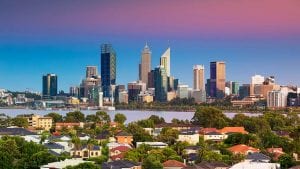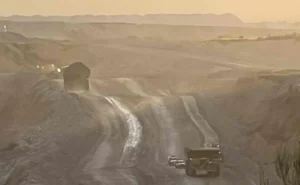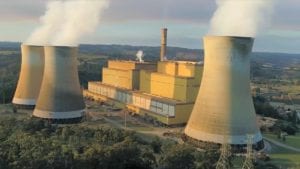
Matt Howell, who is the CEO of Australia’s largest single electricity consumer – the Tomago Aluminium Smelter – thinks that Australia needs a new coal power plant.
On Monday night he told ABC Radio’s PM program that because NSW nearly ran out of power one day last summer – which required his plant to curtail its use of electricity to avoid paying extremely high electricity spot market prices – there was a need to build new fossil-fuel power plants.
According to ABC’s PM program, Howell had been meeting with many politicians in Canberra in recent weeks. He said it was pleasing a growing number of people were coming to the realisation that a new coal plant could be built to supply such reliable power with low emissions.
He told the program: “We have got an abundance of coal. We’ve got the technology. We’ve got the know-how and we would certainly like to see that continued with.”
When it was flagged by the reporter that the CO2 emissions of such plants were higher than gas or renewables he responded:
“We believe that the use of the latest generation coal-fired power technology is perfectly appropriate. It’s appropriate for some of the most advanced countries and economies in the world. It’s certainly appropriate for Australia.”
Listening to this, it struck me that if such plants produce electricity so cheaply, reliably and with low emissions then why wouldn’t his company build one themselves?
It is not as if this is beyond an aluminium company to do such a thing. Alcoa until recently was the long-time owner of the Anglesea Coal Power Station in Victoria.
The Boyne Aluminium Smelter in Queensland is part owner of the nearby Gladstone Coal Power Station. In addition, several of Australia’s alumina refineries own significant power stations.
Also, if he doesn’t like the idea of owning one, there’s nothing to stop him from underwriting the construction of such a plant by someone else through offering a long term contract to buy all its power over a 20 year life. Such arrangements are a standard practice across the globe.
Also, given these new “advanced” coal power plants can apparently produce power with such low emissions that they are “perfectly appropriate”, then he surely doesn’t need to worry about any attempt by government to honour it’s Paris emission reduction commitments either?
But the thing is that he’s probably got a better idea.
Rather than Tomago Aluminium having to pay for a new coal fired power station, why not get you to pay for it instead?
Yes, while the aluminium industry seems to have little difficulty buying power stations in Australia and around the globe, he reckons the government (and by that he means Australian taxpayers), should do it instead.
And that really should come as no surprise, because if Tomago had to pay for a new coal fired power station they’d be out of business.
The cost of their power supply compared to current contracts would likely double based on realistic construction and financing costs that don’t just wish away the Government’s emission reduction commitments.
Howell tried to suggest that government should pay for the power station rather than his company, because the government was subsidising renewable energy which made it hard for the existing coal plants to compete.
This argument is complete rubbish.
If Tomago wrote out a contract promising to buy every unit of electricity from a new coal plant (or an existing one for that matter) at the price its owner needs for it to be viable, then why would the operator of the coal plant care about the subsidised cost of a wind or solar plant?
It is completely irrelevant to how much electricity they can sell and the price they sell it, which is set by the contract with Tomago.
You see, Tomago Aluminium is doing what the aluminium industry has been doing for decades the world over – fooling politicians to give them electricity (or power stations) below its underlying cost with the allure they’ll be creating (or saving) lots of jobs.
But as detailed in my 2010 research for the Grattan Institute, we could create vastly more jobs for greater community benefit by spending that government money elsewhere.
Tristan Edis is Director – Analysis & Advisory with Green Energy Markets. Green Energy Markets assists clients make informed investment, trading and policy decisions in the areas of clean energy and carbon abatement.
Follow on Twitter: @TristanEdis










